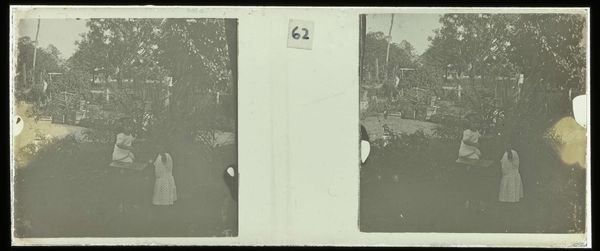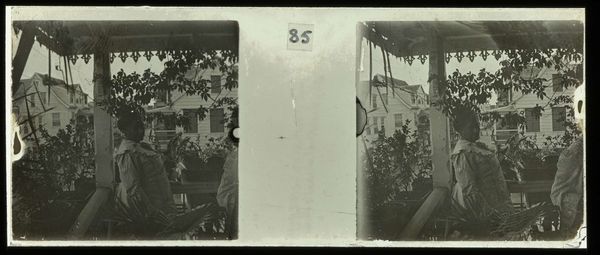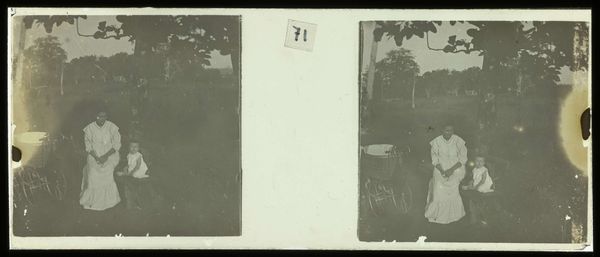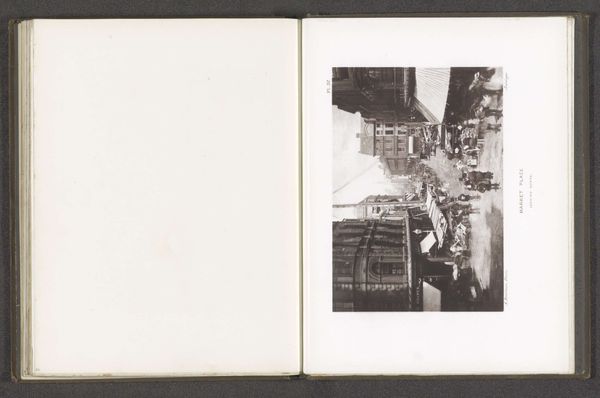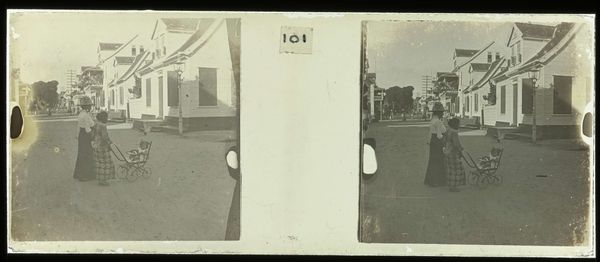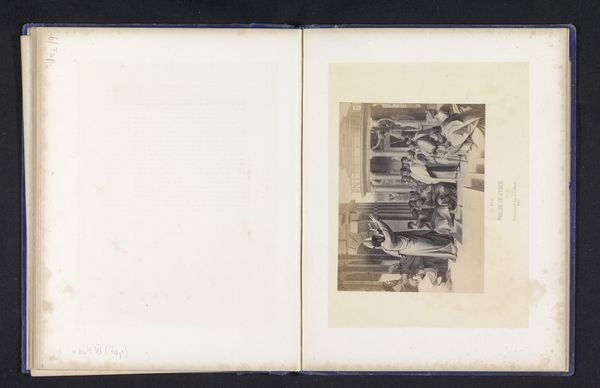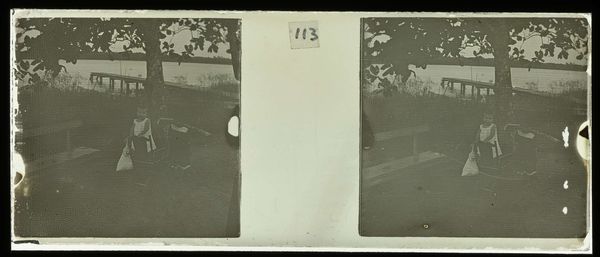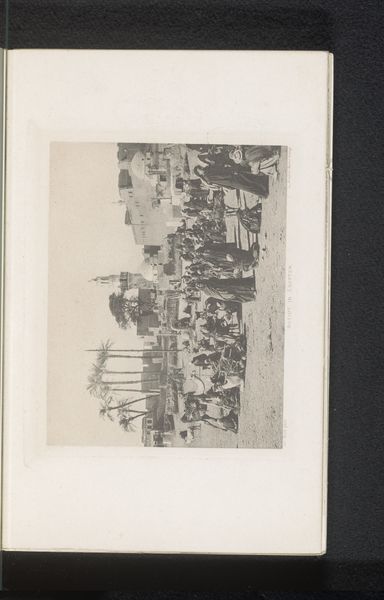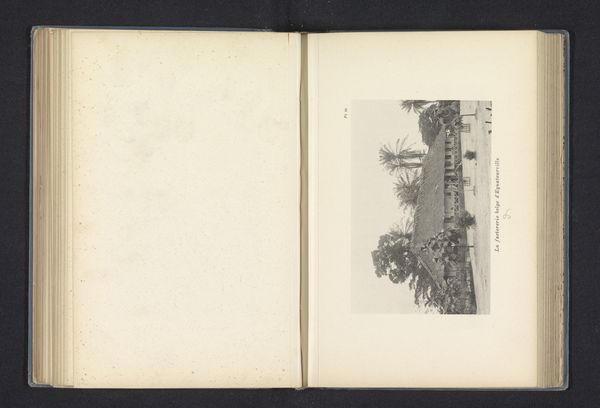
Lize Brouwers met zoon Gerard op de veranda van Plantage Accaribo 1913 - 1930
0:00
0:00
photography, gelatin-silver-print
#
portrait
#
landscape
#
photography
#
gelatin-silver-print
#
genre-painting
#
realism
Dimensions: height 4.5 cm, width 10.5 cm
Copyright: Rijks Museum: Open Domain
Curator: Theodoor Brouwers' photograph, "Lize Brouwers met zoon Gerard op de veranda van Plantage Accaribo", captures a serene moment, likely sometime between 1913 and 1930. The silver gelatin print offers a glimpse into a domestic scene on a plantation. What strikes you first about this image? Editor: There's a palpable sense of quietude, a stillness emphasized by the greyscale tones. It’s less posed than I’d expect for a formal portrait of the era. The details of the veranda, the plant pots, seem almost incidental. Curator: Exactly. The photo resists the stiff formality we often associate with early 20th-century portraits. There's a softness to the light, a casual intimacy in the mother’s gaze. But let’s think about the materiality—it's a gelatin silver print. This would have been a widely accessible technology, right? How does that inform our reading of this image taken on a plantation? Editor: Absolutely, the choice of a gelatin silver print situates this work firmly within the rise of mass photography. While portraits might imply wealth or status, the means of production complicate it. Were photographs commonly accessible on the plantation? Who had control of the means of making and distribution? This might offer insight into Brouwer's role. Curator: Fascinating. Thinking of the production conditions sheds new light, indeed. I tend to see this work primarily as a study in contrast – the domestic sphere and the sprawling landscape, the mother's tender gaze against the harsh realities of colonial life. It feels almost like a snapshot of resistance, doesn't it? Or at least a claim for normalcy in abnormal circumstances. Editor: A claim to normalcy is interesting because it begs questions. How were materials circulated on the plantation? Does photography become a tool of resistance or simply a recording device? The print material tells as much of a story as its depicted content. Curator: These photographs certainly contain stories that ripple in time, don't they? It really is up to each viewer, each age, to engage with their silent testament in their own ways. Editor: Precisely; to think about not just what is recorded, but how—the systems that make image making itself possible.
Comments
No comments
Be the first to comment and join the conversation on the ultimate creative platform.

